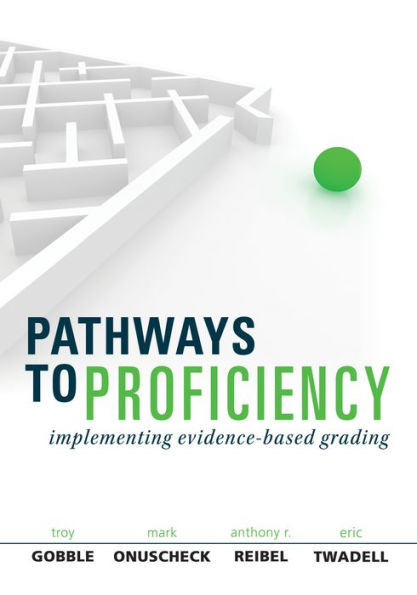Table of Contents
About the Authors xi
Introduction: The Case for Evidence-Based Grading 1
A New Language: Evidence-Based Grading 4
Curriculum Focuses on Proficiency-Based, Student-Friendly Learning Targets 4
Instruction Focuses on Teacher and Student Reactions to Student-Produced Evidence 7
Assessment Gives Students Opportunities for Reflection and Feedback 9
Teachers Determine Grades With a Calibrated Interpretation of Student Evidence 11
Five Phases of Implementing Evidence-Based Grading 12
The Structure of This Book 15
Chapter 1 Preparation 17
Our Team's Story 19
The Four Commitments in Evidence-Based Grading 27
Agree That the Percentage System Is a Flawed Grading Model 27
Eliminate Four Specific Grading Errors 29
Focus on Grading Proficiency 35
Use Student-Produced Evidence 38
Key Points 43
Chapter 2 Incubation 45
Our Team's Story 46
Pathways to Proficiency
The Four Unexpected Relationships in Evidence-Based Grading 51
Proficiency-Based Learning Targets Connect With Grading 51
Feedback Connects With Instruction 56
Assessment Connects With Grading 60
The Gradebook Connects With Learning 63
Key Points 69
Chapter 3 Insight 71
Our Team's Story 72
The Five Insights in Evidence-Based Grading 76
Use Evidence to Inform Instruction 76
Use Evidence to Capture Current Understanding of Student Proficiency 79
Use Evidence for Feedback to Improve Learning 85
Use Evidence for Scoring 92
Use Evidence for Grading and Reporting 94
Key Points 97
Chapter 4 Evaluation 99
Our Team's Story 100
The Six Key Questions in Evidence-Based Grading 103
Are We Collecting the Right Evidence to Determine a Grade? 103
Are We Effectively Communicating Learning Targets and Standards? 107
Are We Providing Opportunities for Student Growth? 110
Are We Separating Academic and Behavior Information in the Gradebook? 114
Are We Ensuring Student Accountability? 116
Are We Creating Effective Evidence-Based Gradebooks? 119
Key Points 124
Chapter 5 Elaboration 125
Our Team's Story 126
The Six Core Beliefs in Evidence-Based Grading 129
Evidence Is More Precise Than Any Formula 129
We Determine What Students Deserve 133
We Never Fully Realize Curriculum Without Evidence-Based Practice 136
Evidence-Based Grading Improves Team Collaboration 139
Communication With the Community Is Essential 140
We Must Take a Postsecondary Perspective 141
Key Points 145
Epilogue 147
References and Resources 151
Index 155



